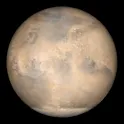
Health
15 Dec 2025
Cannabis derivatives could provide new ovarian cancer treatments
Lab studies find that a combination of THC and CBD kills ovarian cancer cells without harming healthy cells

Health
15 Dec 2025
Lab studies find that a combination of THC and CBD kills ovarian cancer cells without harming healthy cells

Life sciences
11 Dec 2025
Canary Islands as the ‘missing link’ in a global sea urchin killer pandemic

Health
10 Dec 2025
Women who suffer from anxiety symptoms may have fewer circulatory natural killer cells, while those reporting insomnia had fewer total natural killer cells, showing that these disorders could decrease immune response

Psychology
08 Dec 2025
With less than one month before the holidays, many of us are gearing up for the annual Christmas shopping extravaganza. We’re highlighting five articles you won’t want to miss before hitting the shops.

Life sciences
04 Dec 2025
In Sumatra, researchers captured almost three times as many images of critically endangered tigers as during previous surveys, which shows the positive impact of conservation efforts even outside of national parks

Life sciences
02 Dec 2025
In this guest editorial, Dr Shiva Khoshtinat and co-authors present a bold approach for construction on Mars, harnessing microbial partnerships to transform Martian regolith into structural materials

Health
01 Dec 2025
Scientists find a simple, automated way of making lung organoids, which could help find new lung disease drugs and personalize patients’ treatments

Life sciences
28 Nov 2025
Data from almost 50,000 dog owners shows that those dogs that receive CBD supplements are typically older or have health issues. With continued use, they also showed below-average levels of aggression.

Climate action
27 Nov 2025
Increased toxicity from plastic pollution in a warmer climate is highly likely to be affecting whole ecosystems, with potentially disproportionate impacts on apex predators such as orcas.

Social science
20 Nov 2025
Researchers find adults paint richer, more varied trajectories than children, but paintings of the latter share characteristics with famous work by expressionists, including Jackson Pollock

Health
18 Nov 2025
Infants of mothers with high levels of stress hormone age faster and typically have more teeth by six months of age

Social science
14 Nov 2025
Researchers examined menus from Portuguese diplomatic dinners dating from 1910 to 2023 and showed that meals can play a significant role in a country’s foreign policy.

Climate action
11 Nov 2025
Vegan diet cuts carbon emissions by 46% and land use by 33%, while delivering nearly all essential nutrients

Health
10 Nov 2025
New study finds that many people with chronic fatigue syndrome experience disordered breathing which may be worsening symptoms

Health
07 Nov 2025
Over 800 million people globally have a type of diabetes, with numbers steadily rising. November 14 marks World Diabetes Day. We’re highlighting five recently published articles on aging and diabetes.
Get the latest research updates, subscribe to our newsletter